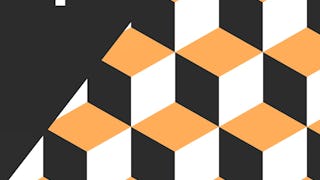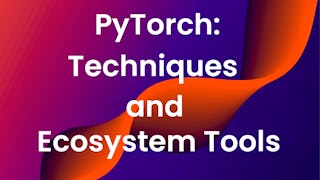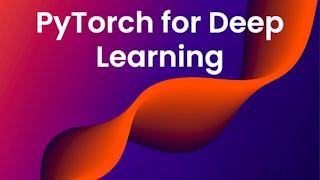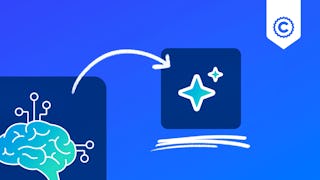Advance your PyTorch skills by building sophisticated deep learning models and preparing them for deployment. You’ll design custom architectures that go beyond Sequential models, exploring Siamese Networks, ResNet, and DenseNet to understand how modern systems handle complex data.

PyTorch: Advanced Architectures and Deployment
This course is part of PyTorch for Deep Learning Professional Certificate

Instructor: Laurence Moroney
Recommended experience
What you'll learn
Design and implement advanced architectures in PyTorch.
Apply advanced techniques in vision, language, and generative modeling—including Transformers and diffusion models.
Prepare, compress, and deploy models for real-world use.
Skills you'll gain
Details to know

Add to your LinkedIn profile
October 2025
8 assignments
See how employees at top companies are mastering in-demand skills

Build your Software Development expertise
- Learn new concepts from industry experts
- Gain a foundational understanding of a subject or tool
- Develop job-relevant skills with hands-on projects
- Earn a shareable career certificate from DeepLearning.AI

There are 4 modules in this course
This module introduces custom architectures that go beyond Sequential models, showing how PyTorch’s dynamic graphs support multi-input/multi-output design, parameter sharing, conditional execution, and dynamic creation. You’ll build Siamese Networks, ResNet, and DenseNet to see how architectural choices solve real challenges like similarity comparison, vanishing gradients, and information reuse.
What's included
5 videos3 readings2 assignments1 programming assignment3 ungraded labs
This module explores specialized vision approaches in PyTorch, starting with how receptive fields grow in CNNs and moving into interpretability tools like saliency maps and Grad-CAM to reveal what drives model predictions. You’ll then dive into generative models, using diffusion techniques with Hugging Face’s diffusers library and Stable Diffusion to create images while experimenting with parameters that shape the output.
What's included
5 videos1 reading2 assignments1 programming assignment3 ungraded labs
This module demystifies transformer architectures by showing how modern NLP models are built from familiar PyTorch components like linear layers, embeddings, and attention. You’ll explore encoder-only, decoder-only, and encoder-decoder designs step by step, learning how attention, positional encoding, and cross-attention make these models so powerful for tasks from classification to translation.
What's included
5 videos1 reading2 assignments1 programming assignment3 ungraded labs
This module bridges the gap between training models and deploying them in the real world, covering how to save, track, and manage experiments with PyTorch serialization and MLflow. You’ll then make models portable with ONNX and optimize them for production using pruning and quantization techniques that shrink size and boost speed without losing accuracy.
What's included
6 videos3 readings2 assignments1 programming assignment4 ungraded labs
Earn a career certificate
Add this credential to your LinkedIn profile, resume, or CV. Share it on social media and in your performance review.
Instructor

Offered by
Explore more from Software Development
 Status: Free Trial
Status: Free Trial Status: Free Trial
Status: Free TrialDeepLearning.AI
 Status: Free TrialStatus: AI skills
Status: Free TrialStatus: AI skillsDeepLearning.AI
 Status: Free Trial
Status: Free TrialCoursera
Why people choose Coursera for their career





Open new doors with Coursera Plus
Unlimited access to 10,000+ world-class courses, hands-on projects, and job-ready certificate programs - all included in your subscription
Advance your career with an online degree
Earn a degree from world-class universities - 100% online
Join over 3,400 global companies that choose Coursera for Business
Upskill your employees to excel in the digital economy
Frequently asked questions
To access the course materials, assignments and to earn a Certificate, you will need to purchase the Certificate experience when you enroll in a course. You can try a Free Trial instead, or apply for Financial Aid. The course may offer 'Full Course, No Certificate' instead. This option lets you see all course materials, submit required assessments, and get a final grade. This also means that you will not be able to purchase a Certificate experience.
When you enroll in the course, you get access to all of the courses in the Certificate, and you earn a certificate when you complete the work. Your electronic Certificate will be added to your Accomplishments page - from there, you can print your Certificate or add it to your LinkedIn profile.
More questions
Financial aid available,